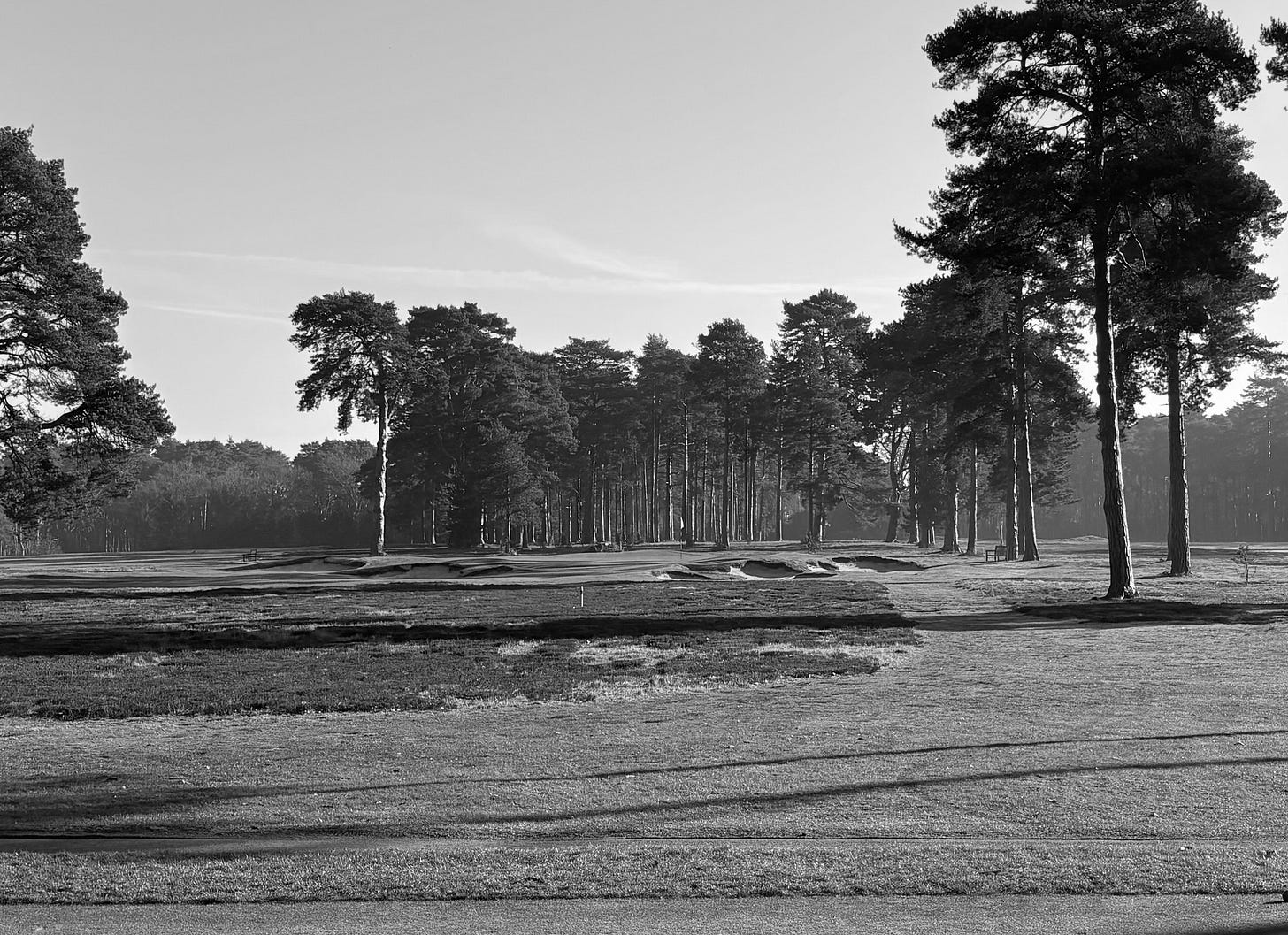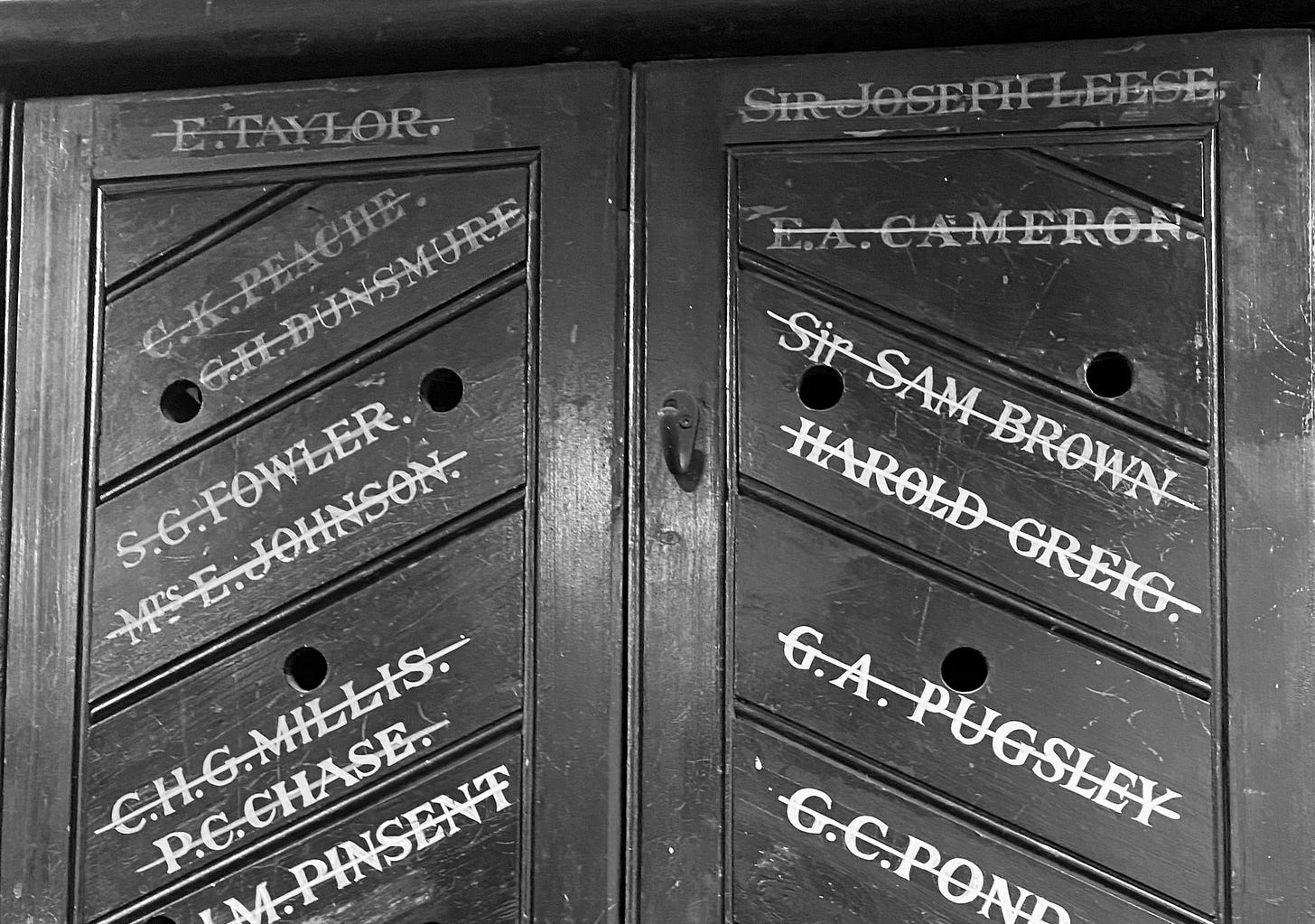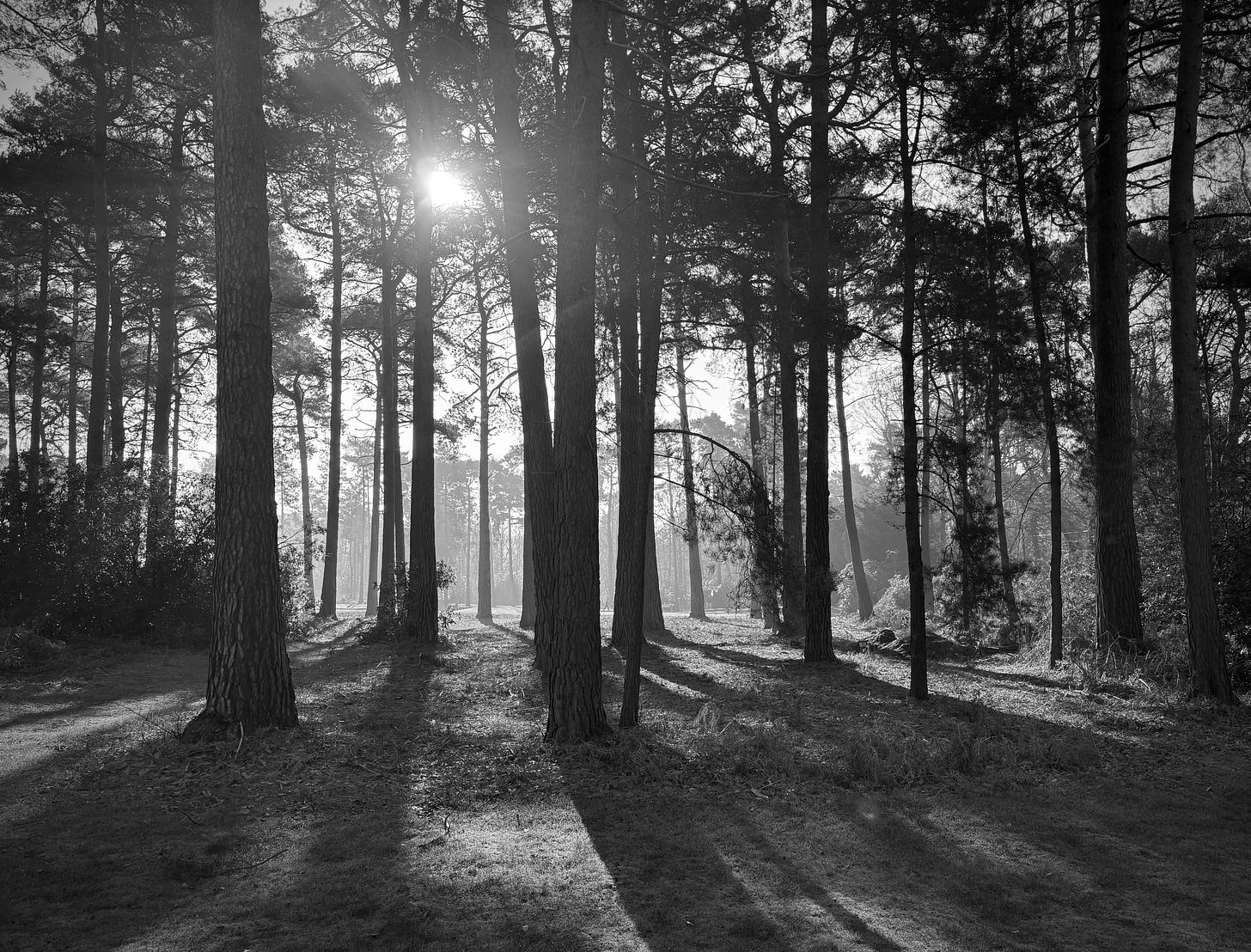In September at Flempton, we fixed up March at New Zealand; “let’s just get a date in the diary”, Tim said, “so life can’t get in the way”. All week, the frost is harsh, coating windscreens and lawns alike with a crunchy, white layer. Winter is hanging on, but we know a change is coming from the catkins along the canal, my commute to this particular fixture.
Tim, on the other hand, must rise a little before four in the morning to get here intact, but does so without complaint. Living in Norfolk, he is used to driving “for a couple of hours in order to get anywhere”, as if he doesn’t even consider that initial chunk part of the journey. It is the tariff he pays to explore other parts of the golfing country, though there is plenty to cherish his end, and I’ve no doubt I will be scraping ice for a similar, return exploration another time.
The sun is creeping above the mighty pines through which New Zealand was carved when we emerge from the clubhouse, and the frost slowly melts as the morning round flows, starting at the sixth this time. Once more, I delight in the chance to just observe a debutante soaking in the subtle charms of New Zealand. It is always a privilege, and as I often do when pointing things out, I start to notice other things, even though it is almost twenty years since I first walked, open-mouthed, through this patch of heathland.
Looking back down the sixth towards the clubhouse, I perceive for the first time just how steep the steady climb is, and at the ninth, the restored bunker way left of the green approach suddenly makes sense. Its presence casts confusion into the mind of the player in the centre of this gorgeous fairway. That player is Tim of course; my natural habitat from this tee is way out left, in the dry leaf litter of the woods. Probably a barely subconscious fear of the right hand bunkering causes it. And from there, that left hand one further up is no longer a decoration or a decoy - it is a fundamental problem. If we were counting, it’d be Tim’s hole long before we reach the green.
New Zealand was the work of Samuel Mure Fergusson, who traded in a role in the Stock Exchange to become the Managing Director of the club after crafting more or less the routing we play today. But when Mure died suddenly in the tower above the clubhouse, in December 1928, the club swiftly invited Tom Simpson to tweak the course. The Haskell ball had been around for a quarter of a century by that point, but there had also been a revolution in the style in which courses were laid out since the opening day here, in May 1895.
With the help of Philip Mackenzie Ross, Simpson’s scheme caressed and enhanced the original course, replacing penal cross-hazards with flowing, strategic bunkers and swales, and though the property isn’t vast, there was enough space for Simpson to put his own stamp down in places. The delightful third, for example, did not exist in the original routing, and he reversed the tenth (though then the ninth) to face the way it does now. What plays as today’s eleventh, down towards Martyrs Lane, was once two short fours, the second one crossing what was then only an occasionally used bridleway, but it is the additional field the club bought while Mure was still around that transforms the closing stages of this brilliant matchplay track. The seventeenth a severe dogleg, to a tiered green that falls into the left hand bunker, followed by a genial closing hole, with its own Valley of Sin and a central knob in the green that casts away timid approaches.
We close up the morning on the fifth, with shards of sunlight bursting through the clouds and, as lunch is prepared, I point out a few bits and pieces in this iconic clubhouse. Mure’s old medals - or at least the ones that remain, as his friend Horace Hutchinson reported in Country Life that many of his “medals beyond reckoning” had been “stolen by the hands of a burglar”. The two silver medals he got for reaching the final of The Amateur remain, though, and that it was only John Ball Jr and Freddie Tait that prevented him winning that honour speaks volumes for him as a player and not just a pioneer of heathland golf.
We peer at the old lockers, and reflect that some seem to offer - by dint of having fewer names populate their timber timeline - some form of longevity for the lucky custodians, but in truth to have one’s name in white paint is to have lived a fine life, and to have the chance to play here and see them is a blessing in itself.
Then we gaze up at Mure, as he casts his formidable glance over the Dining Room, and I remember that tale which is “so New Zealand” in its mischief. Upon reframing the painting a good many years ago, this full length portrait was reduced in height, in order to fit the space he now dominates, and Mure’s legs rolled up and misplaced. But I like to think of them marching around the course for all eternity, covered in tweed.
Over coffee we decide to play a few more, and this time with hickories, as we did up at Flempton. And the same strange thing happens, for - with these more delicate, moody weapons to hand - our golf perversely improves, and a fine morning becomes a magnificent afternoon, playing with the sort of tools old Mure & co took to this particular coalface. We’ve both plenty of reasons to be getting on with other stuff as we follow our cleek strokes up the short fifth, and if I’ve only a mile to negotiate to get home, Tim has 142 of them.
But the thing is that we’ve barely had days like this since we last met and played, with the sun on our backs and the world held at bay beyond those black gates, so when I test the water for a few more holes, Tim delights me with an instant response. “Very much so”, he smiles, “I’m here for the day”. And what a day it is.
So we carry on, and we don’t turn right at the seventh, and we don’t turn right at the eighth. We just carry on going until we run out of holes again, and in the clinking of old clubs and the crunch of spike on gravel, “life can’t get in the way” for a change. Life is right here with the woodpeckers and the labradors and the first signs of spring. That Tim holes from everywhere repays his alarm call and mileage in spades, and by the end it is a shock not when the lengthy putts go in, but when they don’t.
There is one more thing to do before the gates quietly part and we rejoin the stream of the hurried outside. We determine a date to do it all over again, with the venue to be confirmed but the kind of day already fixed. Perhaps it will be Felixstowe, where Mure’s young legs once strode, or Brancaster, if we can time it so the tide is rising. Or Bungay or Cavendish. Or all of them, in time. But wherever we go, the important bit is that once we step out, “life can’t get in the way”. It will be marvellous.








A lovely read as always. I do need to get to New Zealand.
Please come to Cavendish. It’s a terrific hickory course and we celebrate our centenary this year. You will love it!
I must take your words to heart! Wonderful as always ⛳️ What a lovely way to spend a day!